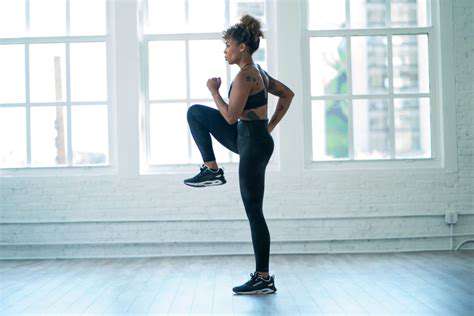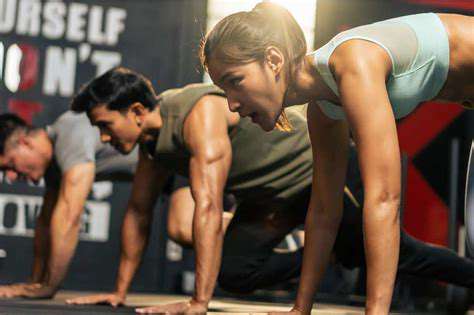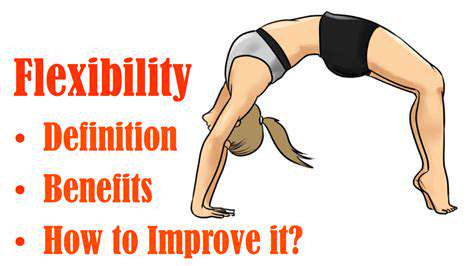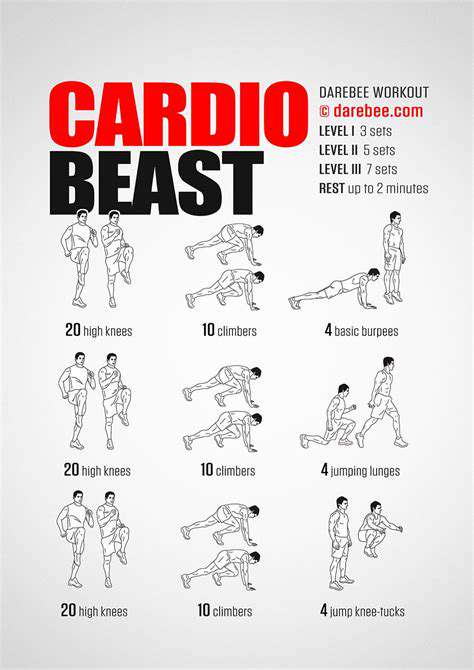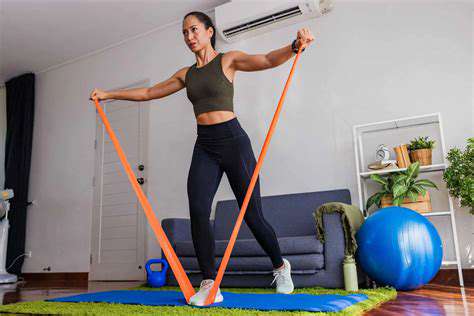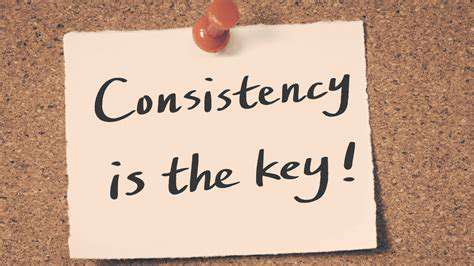Functional Training for Strength and Independence
The true value of functional training shines outside the gym walls. By strengthening the exact muscles used in daily tasks - bending, twisting, pushing, pulling - it can dramatically improve your quality of life. Simple acts like carrying laundry baskets or getting up from chairs become effortless when your body moves the way it was designed to.
As we age, functional training becomes even more valuable. The improved balance and coordination it develops serve as natural protection against falls. When your core is strong and your body awareness sharp, you move through the world with greater confidence and safety.
Specific Exercises and Techniques: A Practical Guide
Functional training includes timeless movements like squats, lunges, and push-ups, but with an important twist - they're performed with an emphasis on how we actually move in daily life. Quality always trumps quantity here; performing five perfect squats with full control beats twenty sloppy ones every time. Many trainers incorporate tools like resistance bands or balance boards to better simulate real-world challenges.
The magic happens when these exercises challenge your body in multiple dimensions at once - like doing a lunge while rotating your torso, mimicking how you might reach for something while climbing stairs. This multidimensional approach builds truly functional strength.
How to Incorporate Functional Training into Your Routine
Start small with functional training - even adding just two or three exercises to your existing routine can make a noticeable difference. The key is consistency and gradual progression. Listen to your body's signals; some muscle soreness is normal, but sharp pains are warning signs. Many people find working with a trainer initially helps them learn proper form before progressing independently.
Remember that functional training complements other exercise forms beautifully. Pair it with cardio for heart health or yoga for flexibility to create a well-rounded fitness program that serves your entire body.
The Role of Progressive Overload in Functional Training
The principle of progressive overload - gradually increasing challenge - applies perfectly to functional training. This doesn't always mean adding more weight; sometimes it means performing the same exercise on an unstable surface or combining movements. The goal is continuous, sustainable improvement without pushing to the point of injury.
Tracking progress in functional training can be especially rewarding because the benefits show up in daily life - suddenly noticing how much easier it is to carry heavy grocery bags or get up from the floor after playing with kids.
Key Functional Training Exercises
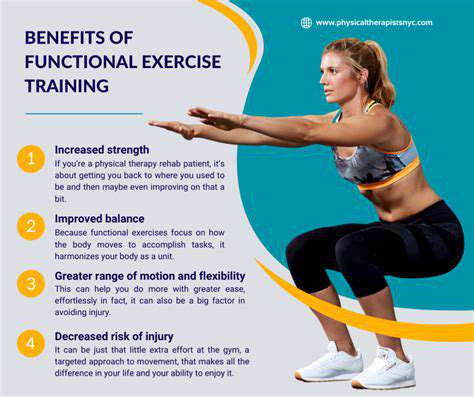
Warm-up Exercises
Never skip the warm-up - it's your body's preparation for the work ahead. A proper warm-up should include movements that gently take your joints through their full range of motion while gradually increasing heart rate. Think of arm circles that loosen shoulders while standing on one leg to wake up your balance systems. This 5-10 minute investment dramatically reduces injury risk and improves workout performance.
Squats
The squat is nature's perfect movement pattern - we use it every time we sit down or stand up. When done correctly, it strengthens nearly every muscle in your lower body while teaching proper hip hinge mechanics. Focus on keeping your weight in your heels and chest proud as you lower down. Mastering the squat builds foundational strength that benefits every aspect of daily movement.
Lunges
Lunges train your legs to work independently while challenging your balance - just like walking does. They're especially valuable for identifying and correcting strength imbalances between sides. The key is maintaining an upright torso while ensuring your front knee stays aligned with your toes throughout the movement.
Push-ups
Push-ups are the ultimate upper body functional exercise, working your chest, shoulders, arms and core simultaneously - just like pushing a heavy door or getting up from the ground. If standard push-ups are challenging, start with hands elevated on a bench. Regular push-up practice builds the kind of strength you actually use in daily life.
Plank
The plank teaches your core to stabilize your entire body - crucial for everything from carrying heavy items to preventing back pain. Focus on maintaining a straight line from head to heels while breathing normally. Even 20-30 seconds of perfect form provides tremendous benefit.
Rows
Rows counterbalance all the forward bending we do in daily life, strengthening the muscles that pull your shoulders back. Whether using resistance bands or dumbbells, the movement should initiate from your shoulder blades squeezing together. Strong back muscles are your best defense against poor posture and related aches.
Deadlifts
Deadlifts teach proper lifting mechanics - keeping your back straight while lifting with your legs. This translates directly to safe lifting of children, luggage, or heavy boxes. Start with minimal weight to master the hip hinge pattern before progressing. When performed correctly, deadlifts might be the most functional exercise of all.
Incorporating Functional Training into Your Routine
Understanding Functional Training
Functional training stands apart because it prepares your body for actual life demands rather than just gym performance. The exercises train movement patterns rather than muscles in isolation. This creates strength that's immediately applicable outside the gym - whether you're gardening, playing sports, or chasing after grandkids.
Benefits of Functional Training for Strength
The strength gained from functional training is different - it's usable strength. Because the exercises mimic real-life movements, the strength transfers directly to daily activities. You'll notice the difference when carrying heavy items feels easier or when you can play longer without fatigue.
Key Exercises for Functional Training
The best functional exercises are those that train fundamental human movements: squatting, lunging, pushing, pulling, and rotating. Variations like single-leg movements or adding rotation make these exercises even more functional. Always prioritize control and proper form over speed or weight.
Integrating Functional Training into Your Existing Routine
Start by replacing one or two traditional exercises with their functional counterparts each workout. For example, swap machine leg presses for bodyweight squats, or lat pulldowns for standing resistance band rows. Gradually increase the functional component over several weeks as your body adapts.
Choosing the Right Equipment for Functional Training
While functional training can be done with just bodyweight, simple tools like resistance bands, kettlebells, or suspension trainers add valuable variety. Choose equipment that allows natural movement patterns rather than restricting them like some machines do.
Assessing Your Progress and Making Adjustments
The best progress indicators in functional training are improvements in daily life activities, not just gym numbers. Notice when household tasks become easier or when you can move with greater ease. Adjust your routine every 4-6 weeks to keep challenging your body in new ways.

